DOI:10.32604/iasc.2022.023922

| Intelligent Automation & Soft Computing DOI:10.32604/iasc.2022.023922 |  |
| Article |
Intelligent Computing and Control Framework for Smart Automated System
1Department of EEE, PSN Institute of Technology and Sciences, Tirunelveli, 627012, India
2Department of ECE, Gnanamani College of Technology, Namakkal, 637018, India
3Department of ECE, PPG Institute of Technology, Coimbatore, 641035, India
*Corresponding Author: R. Manikandan. Email: manikandanmaya14@gmail.com
Received: 26 September 2021; Accepted: 03 November 2021
Abstract: This paper presents development and analysis of different control strategies for smart automated system. The dynamic role of an electrical motor and sensor interfacing with wireless module becomes an essential element in a smart agriculture system to monitor various environmental parameters. The various key parameters such as temperature, humidity, air pressure, soil health and solar radiation are widely used to analyze the growth of plants and soil health based on different climate conditions. However, the smart development of an automatic system to measure these vital parameters provides a feasible approach and helps the farmers to monitor their crops productivity. In this paper, a smart sensor based intelligent and automatic control strategies such as fuzzy logic controller and PID (Proportional Integral Derivative) controller is developed to collect the real time environmental parameters and to adapt any environmental conditions by updating their membership functions automatically with the help of sensor outputs. This paper targets to bring the usage of sensor-based intelligent and automatic control methods in the field of an agriculture system which includes automatic solar panel tracking and control, environmental vital parameters measurement, monitoring and implementation of intelligent control methods. The different experiments have been carried out with the support of graphical and microcontroller programming environment. Experimental results provide that the proposed system effectively measure the environmental parameters and provide an accurate transmission of data for continuous monitoring. The advantage of the proposed system is simple, easy to implement and maintain the dynamic environment for plants with respect to any climate conditions.
Keywords: Internet of Things; environmental vital parameters; intelligent control methods; solar tracking; DC motor; sensors
The importance of designing a smart system around the global becomes an essential target in the current scenario for various advanced measurement and rapid monitoring of various region of interest. Nowadays, the development of latest technologies brings a novel solution to the engineering problems in an effective way. This will help the young developer to design and develop an innovative product in the area of real time system design, application development, smart monitoring and smart agricultural system design. The wide use of sensing technology and wireless sensor networks provides a flexible mechanism to cover the functionality for real time environmental system design and vital parameters measurement. Smart agricultural system design involves monitoring the environmental conditions and measuring the parameters ranging from ground level sensing to an environmental remote monitoring. This can be done with the support of Internet of Things (IoT) concept by various wireless devices such as Bluetooth, Zigbee, Wireless Fidelity (Wi-Fi), Radio Frequency Identification (RFID) and Long Range protocols. The importance of climate change and their effects in an agriculture environment has a great attention from an engineers and researchers in the area of agriculture during the last decades. The system to measure the environmental parameters during all the season of climate change becomes a critical challenge and need to be design a real time system to monitor the same. The great applicable use of an IoT and intelligent control strategies in agriculture leads a smart way to the researchers, farmers and agriculture labours to reduce much kind of real time problems. The various researchers have been studied and collected the relevant problems statement in the field of an IoT based smart agricultural system development with smart intelligent control methods.
The rapid growth of remote measurement and research on greenhouse control environment brings an immediate care to the researchers for designing smart agriculture IoT system. The existing development of this system has many drawbacks such as high size, high cost, low energy, loss of data, improper control, battery power and high power consumption. The key requirement for effective monitoring system lies on their battery for long term operations. Using power source to the sensor consumes high cost for long term continuous operations. Therefore, renewable and environmental energy sources are greatly used by many researchers to power the system. However, harvesting energy becomes one of the most important challenging tasks to the researchers to develop a standalone device to operate for long term. The energy from solar, wind and tidal serves a main role to reduce the cost of the entire system and also allow continuous monitoring. In order to develop a smart agriculture system, environmental energy in the form of solar radiation becomes very important and used by researchers to harvest the energy which always depends on real time weather conditions. Most of the solar radiation that reaches the earth is made up of visible and infrared light. Only a small amount of ultraviolet radiation reaches the surface. Fig. 1 depicts the graphical representation of solar radiation transmission at earth surface.
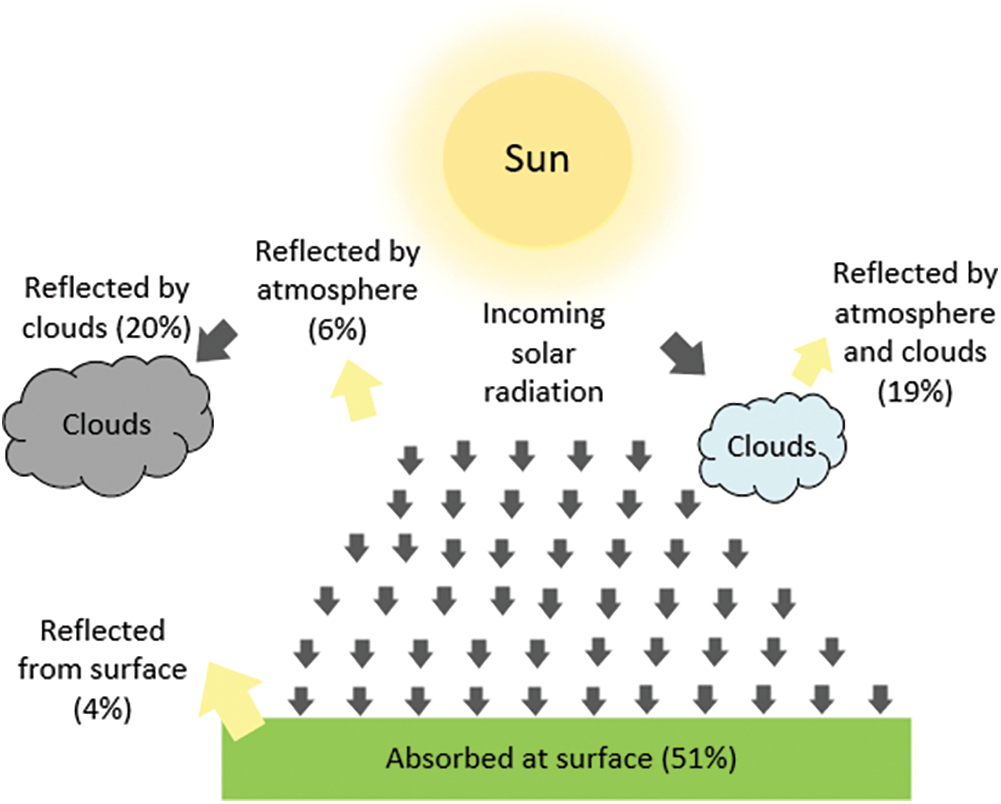
Figure 1: A graphical representation of solar radiation transmission
In an agricultural field, solar energy plays the major role from planting the seed to the full growth of a plant. Photosynthesis is the process which helps to grow the plants and reduces the carbon dioxide and increases the oxygen in the air. The radiation level at earth surface is varying in day time and the night time. It depends on the sun’s angle with the earth. Solar radiation varies based on the surrounding weather condition and location of the place. The use of solar radiation in an agriculture and environmental research becomes very essential since it applicable for many outdoor field researches. In an agriculture and environmental research environment, there are many methods have been investigated for the new outcomes as a product. The researchers from all over the globe are investigating the several methods to monitor the environmental parameters by measuring solar radiation at earth surface. It is important to monitor the solar radiations and temperature at a field of agriculture. The system to monitor an ultra violet and visible radiation from solar spectrum, environmental temperature, humidity need to be updated and becomes an alternative solution for real time monitoring. The available modern technologies allow the farmers to monitor their plants remotely and also to grow large amount of food within short time period. In order to monitor large amount of field, it is timely necessary to design and develop a smart IoT enabled agriculture system to monitor the environmental parameters continuously. Also, there is a need to design a dynamic controller with respect to environmental conditions which allows the automation of an agriculture system with any environmental conditions.
This paper presents the development of sensor-based intelligent control strategies for monitoring environmental vital parameters by means of agriculture IoT system. Here, a real time solar tracking control system has been developed for tracking the position of sun to measure full range of solar radiation. Sensing technology includes the custom developed light intensity sensor to detect light intensity in the form of light variable. The other sensors such as ultraviolet, temperature and humidity sensor module are integrated with the proposed system to monitor the necessary environmental vital parameters. The measurement of these parameters by proposed sensing module helps the farmers to monitor the required amount of radiation to their plants. The sensor data could be monitored remotely by the farmers and also used for performing control actions. The smart intelligent control methods such as PID and Fuzzy logic controllers have been tested with the system to analyse the performance of control methods. To increase the efficiency of agriculture plants, it is necessary to maintain the correct level of environmental parameters. The ultimate role of sensor technology with intelligent control methods and wireless communication capability brings the solution to achieve real time remote monitoring of vital parameters. The reminder of this paper is organized as follows: Section 2 presents a brief overview of related work on smart agriculture IoT system which contains solar tracking system, sensor based environmental monitoring and Intelligent control methods. Section 3 describes a theoretical framework for proposed system architecture and the main components of the proposed systems; Sections 4 and 5 presents measurement results and conclusion of the paper.
The dynamic review of literature in this paper focused on four different key parameters which include sensors for agriculture monitoring, solar panel tracking system, intelligent control methods and Wireless monitoring system. The summary of various works related to this paper is shown below in Fig. 2.
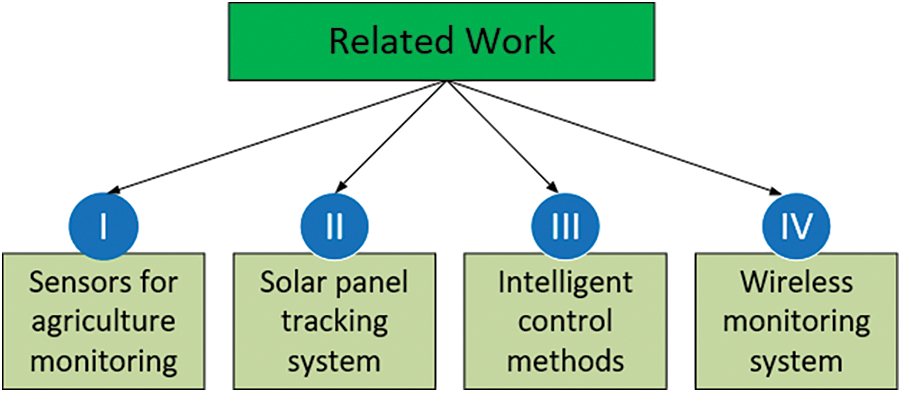
Figure 2: Summary of related work key areas
The increased population and the advancements in industrial development affect the environmental factors in large proportion. This change in environmental factors greatly influences the growth of healthy plants. The environmental parameters that affecting the plants are temperature, light radiation, humidity, soil condition, air permeability, landscape, water and climate. The different researchers have been developed a system which contains sensor for agriculture and environmental applications.
A chloride sensor is proposed to measure the soil salinity to improve the quality of the irrigation water [1]. The various patterns of sensors used in precision agriculture using wireless sensor network is studied in [2]. The study deals with the coverage and connectivity in wireless sensor network by classifying the measurements into single, double and multi metric based measurements. The performance of the pattern arrangement is measured using Network Simulator. In [3], a backscatter sensor is presented for leaf sensing. Here the sensor is used to measure the temperature difference between the air and the leaf to identify the water stress in the plant by measuring the thickness of the leaf. The temperature between the leaf and air is measured to identify the water stress of the plants by an RFID-based autonomous leaf-compatible temperature sensing system [4]. A handheld microwave reflectometer-sensor system to monitor the moisture level of different variety of soils is proposed in [5]. An ultraviolet (UV) intensity monitor is designed to monitor the ultraviolet variations [6]. They also proposed a ultraviolet based transducer which produced the output as duty cycle. But the measurements may vary according to the change in temperature. The various humidity sensors and their measurement in an agriculture environment are presented in [7]. A solar irradiance sensor is developed with the help of Neural Network (NN) for tracking the solar irradiance from the sunlight which can be carried out in an extended photovoltaic power plant [8]. Here, the temperature sensors are used to monitor the temperature level of the environment. The solar irradiance is monitored by working out the entropy [9]. Monolithic Illumination Meter is used to record the solar radiation level [10]. The magnitude of the solar irradiance is estimated in solar farm. They measured the irradiance in the tilted plane and recorded that the solar radiation in the first level of the solar farm is higher than the irradiance in the second level of the solar farm [11,12].
2.2 Solar Tracking and Intelligent Control Methods
Nowadays energy conservation is very essential in agricultural field and various techniques have been investigated for energy conservation. The dedicated solar panel with power tracking schemes can be used to save the energy by observing sun’s radiation entire day. A Maximum Power Point Tracking (MPPT) system is developed comprising a Buck type dc/dc converter managed by a microcontroller [13]. The use of MPPT system for different weather conditions are detailed in [14]. The fast reference tracking and charge recycling approaches is preferred for good quality visuals in an output panel [15]. Microcontroller based low-cost solar tracking system is designed by [16]. Cadmium sulfide (CdS) optical sensor is used for sensing the light in the solar tracking system. Solar tracking system for measuring the intensity of light by phototransistors and an automated panel is described in [17]. An analog maximum power point tracking technique is proposed in the photovoltaic system for better energy consumption [18]. A system is proposed to analyse the behaviour of buck converter for MPPT system [19]. An open circuit voltage measurement is put forward throughout the pseudo normal performance of the thermoelectric generators (TEGs) [20]. MPPT algorithm is used to command the synchronous Buck–Boost converter. A solar tracking system controlled by a microcontroller and Light dependent resistors (LDR) which automatically tracks the sun light to increase the output energy is proposed in [21]. Autonomous semi-portable solar powers tracking system is designed for saving the energy and converts the solar energy into alternating current [22]. Mechanical based solar panel tracking system is developed using Field Programmable Gate Array [23]. The faults in the solar panel can be identified by evaluating its intrinsic parameters [24]. A MPPT using grey wolf optimization (GWO) technique is designed for imperfect lighting conditions. The tracking performance obtained from the proposed partial shading conditions is compared with the existing algorithms and shows better efficiency and reduced oscillation [25]. Hua et al. proposed a hybrid MPPT for rapid tracing of the light and modify the step size of the PV panel by combining a novel modified fractional open circuit voltage technique [26].
Chogueur et al. presents a framework for solar tracking system acquired from PIC16F877A microcontroller and a servo control [27]. The speed of MPPT system is increased in different environmental conditions using an improved incremental conductance algorithm [28]. A global maximum power point tracking algorithm under partially shaded photovoltaic string is proposed to track the global MPP by interfacing Paricle Swarm Optimization (PSO) approaches [29]. A novel online sensor less dual axis sun tracker synchronized with MPPT system is proposed by [30]. Lelutiu et al. implemented a highly efficient, compact automatic solar panel launched by a mobile trailer [31]. Xenophontos et al. proposed a novel model based analytic method to improve the efficiency of the system. Two-resistor solar cell model (TRM) is used to locate the MPP in partial shaded condition [32]. The paper is proposed make a study on improved PV system for MPPT. The controlling system is carried out by digital signal processor (DSP) microcontroller [33]. A manageable low-cost solar tracker system developed with dual axis operated by Light Dependent Resistor (LDR) [34]. The output performance is compared with the fixed solar panel. Two DC motors with gear box is used for the movement of the panel. An adaptive flexible power point tracking (FPPT) approach is proposed in variable atmospheric condition for better efficiency [35].
A new robust model reference adaptive system (MRAS) method in solar PV powered water pumping with induction motor drive is presented to evaluate the rotor speed of direct torque control (DTC) [36]. An adaptive algorithm is proposed to design an intelligent automated solar tracking control system to improve the efficiency of solar energy for variable weather conditions [37]. LoRa based transceiver is used for distant monitoring and for data transmission. A solar panel companion inverter (SPCI) is designed which makes use of single-stage power conversion topology [38]. A wireless sensor monitoring node is proposed for solar tracking. Kalman filtering algorithm is used to gather the information of the farm and the data are communicated through GPRS module [39]. Bidyadhar et al. designed an incremental proportional integral derivative (IPID) controller interfaced by adaptive MPPT algorithm [40]. Here the MPPT converter system is analysed using recursive least square algorithm and incremental generalized minimum variance (IGMV) control algorithm and the IPID controller is tuned.
2.3 Wireless Monitoring System
Nowadays Internet of Things plays a major role in human life for data communication between computerized system and person using their distinctive identifiers and the capability to transfer the information without person to person or person to computer interactions. Various researchers carried out their works on IoT to know its advantages and disadvantages in monitoring system.
The effects in Long Range (LoRa) protocol due to the packet retransmissions are analysed using novel mathematical model. Depending on the transmission overhead, LoRa WAN issues four divergent cyclic coding rates [41]. The problems, various open issues and different solution about the LoRa Networks are studied in [42]. Renewable and cost-efficient soil energy is suggested to develop a self-powered wireless environment monitoring system. The D-size Zn-C soil energy cell is used to generate the power based on the moisture contents and response of microorganisms in the soil [43]. Adaptive tuning algorithm is proposed to manage the IEEE 802.15.4 parameters and the sampling frequency of sensor nodes created in agricultural fields [44]. Heterogeneous network architecture with star wireless personal area networks (WPAN) is used for network modelling. Base station acts as Decision supporting system (DSS). IoT based low budget inter digital FR4-based capacitive automatic sensor system is proposed for monitoring the nitrogen concentration in the agriculture farm. It senses the nitrogen concentration of water from the lake or stream. The gathered data is transmitted using LoRa protocol [45].
The merits and the problems faced by IoT and data analytics in agriculture are provided in [46]. According to them, the main features needed for IoT to satisfy the agriculture purposes are efficiency, memory, size of the system, its coverage, durability, and the cost involved for execution. Wireless sensor network is designed for analysing the soil condition. Here, Zigbee protocol is used for communication purposes [47]. IoT is used for satellite farming in rural areas and communicated through Wi-Fi based long distance (WiLD) network [48]. A mobile greenhouse environment monitoring system is developed with the help of IoT [49]. A hybrid combination of Raspberry Pi and an Arduino chip is used for monitoring. The different technologies used in IoT for farming physical structure, data acquisition, data processing, and data analytics, and compared various technologies like cloud computing, big data storage and data analytics with IoT are discussed in [50]. IoT and machine learning (ML) forms for are proposed for the salinity measurement of soil [51]. Photovoltaic Agricultural Internet of Things (PAIoT) is put forward in smart agriculture [52]. The operating principle and the performance of PAIoT are compared with the traditional agricultural IoT and traditional greenhouse IoT.
The proposed system architecture for development of smart agricultural IoT system to monitor environmental vital parameters is shown in Fig. 3. The overview of this system includes design of an automatic solar tracking system, real time sensor interfacing which includes ultraviolet (UV), humidity, light and temperature sensors.
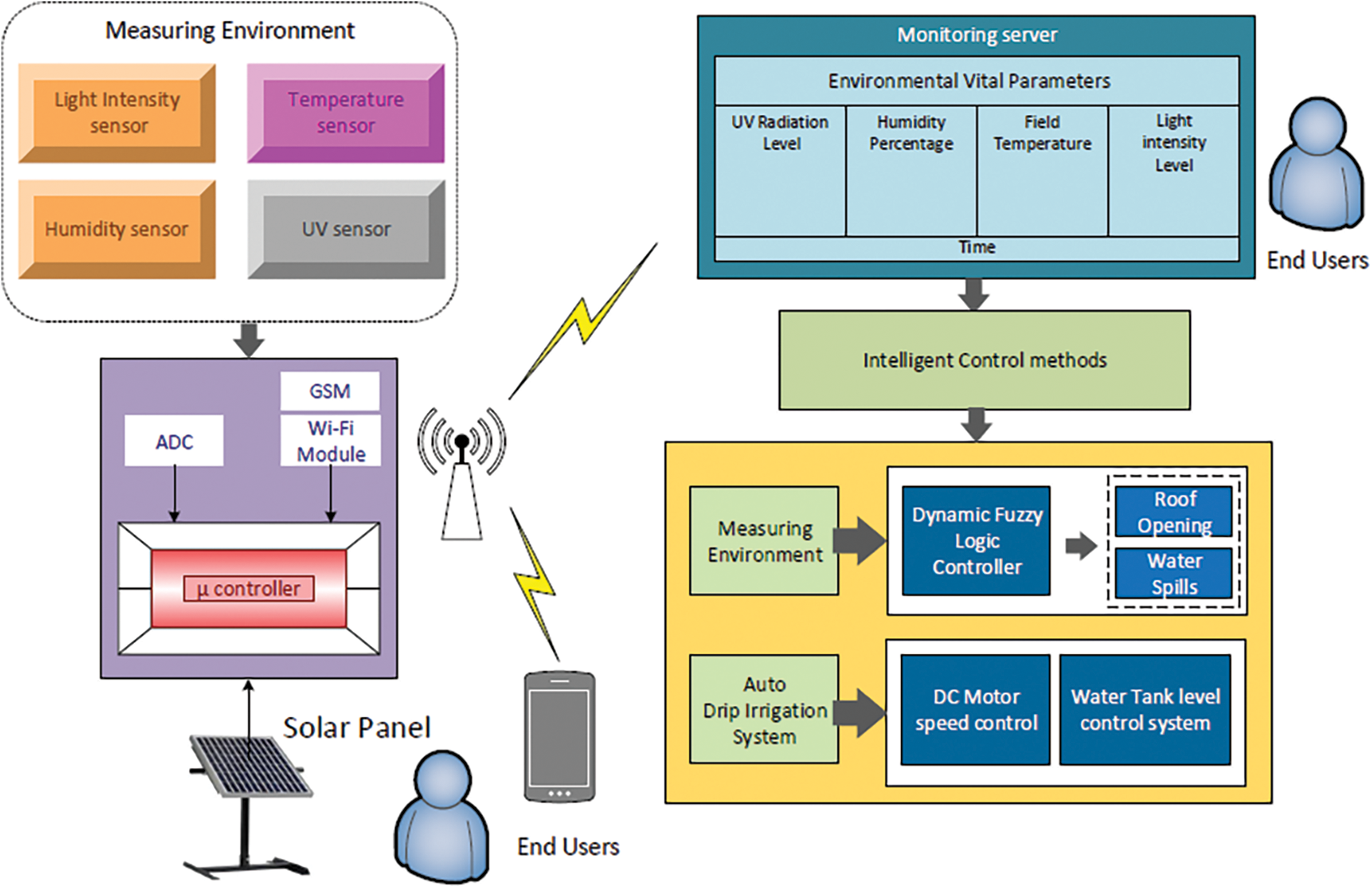
Figure 3: Proposed system architecture for sensor based smart agriculture system
The automatic solar tracking system is designed to harvest the ambient energy from sun light. This can be done with the help of 36 cells solar panel with automatic control mechanisms. The solar panel movement based on the direction of sun light along with sensor setup is controlled by DC motor to measure the environmental parameters. It is necessary to monitor the environmental parameters remotely in the area of agriculture by farmers for improving the productivity of their plants. It also provides the mechanisms for enabling the safety measures such as activating drip irrigation system. The control methods such as fuzzy logic controller and PID controller have been used in this paper for controlling the speed of DC motor, water level control for drip irrigation. The dynamic fuzzy based automatic control methods have been investigated and proposed the system to maintain the desired environmental conditions based on any climatic conditions.
3.1 Solar Panel Tracking System
Solar panel tracking system plays a vital role to extract the energy from an ambient environment. The control of solar panel to track the position of sun becomes an essential in an agriculture field by observing the radiation level throughout the growing season. This paper proposed an automatic solar panel tracking system in which DC motor is integrated with Atmega 328P microcontroller to control the movement of solar panel based on the sun light position as shown in Fig. 4. The proposed solar panel tracking system also consists of LDR attached at both the end of solar panel to measure the light intensities. The light intensity sensors are also used along with this solar panel tracking system which helps to sense the maximum radiation level.
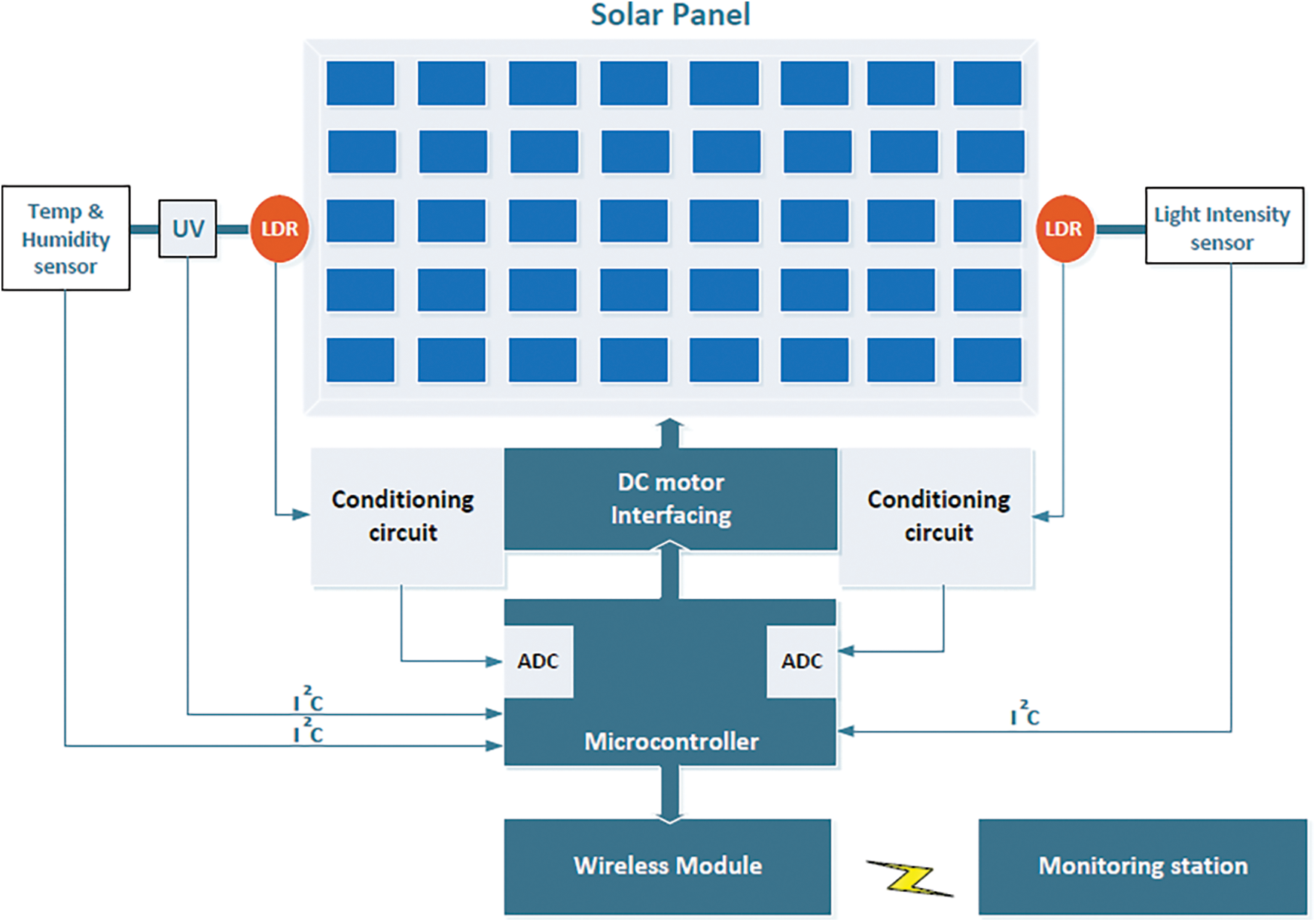
Figure 4: Sensor based solar panel tracking and control system
3.2 Sensor Module for Vital Parameters Measurement
The proposed light sensor consists of photodiode, filters, diffuser and transimpedance amplifier. The sensor module used in this paper is mainly focused on measuring the environmental vital parameters. This paper also proposed Inter Integrated Circuit (I2C) enabled UV sensor, humidity sensor, soil moisture sensor and temperature sensor to measure the required parameters. The sensing module with wide range of applications helps the designer to develop a smart system with greater flexibility. It will be greatly used by farmers to monitor the growth of their plants. The specification of used sensor module is summarized in Tab. 1.

3.3 Wireless Remote Monitoring
The ultimate goal for developing a remote wireless monitoring system is to transmit the data from sensing module. The development of wireless remote monitoring with advanced communication technology enables the designer and researchers for continuous monitoring applications. In this paper, Wi-Fi and LoRa modules are used to develop a remote monitoring system and enable the transmission of data to remote locations. The device layer of this system contains the sensors and microcontroller for sensing and processing of physical data. The connectivity layer presents the usage of wireless modules such as Wi-Fi and LoRa protocols for transmitting the data. The application layer provides the monitoring station, application software and computing platforms to visualize the real time data.
3.4 Intelligent Control Methods
Intelligent control methods with sensor technology play a main part in modern agriculture. Nowadays smart agriculture is carried out in many agriculture fields to increase the crop production. This can be done by means of various agriculture sensors and involvement of intelligent control methods. There are different soft computing approaches are used to perform the required control actions. The control techniques such as fuzzy logic, machine learning, genetic algorithms and artificial neural networks have drastically increased to design a real time system with better accurate output response. The intelligent control methods used in this paper mainly focused on designing dynamic fuzzy logic controller to adapt any environmental conditions by updating their membership functions automatically with the help of sensor outputs, PID control approach to control the speed of DC motor and control of tank water level for automatic irrigation system.
The proposed methodology is implemented in a greenhouse environment as shown in Fig. 5. Here, fuzzy rule based dynamic controller is designed with respect to sensor inputs and environmental conditions. Based on the inputs, controller adjusts its membership functions automatically and activates the control strategies such as water spills and roof opening which help the system to maintain the desired level of environmental conditions.
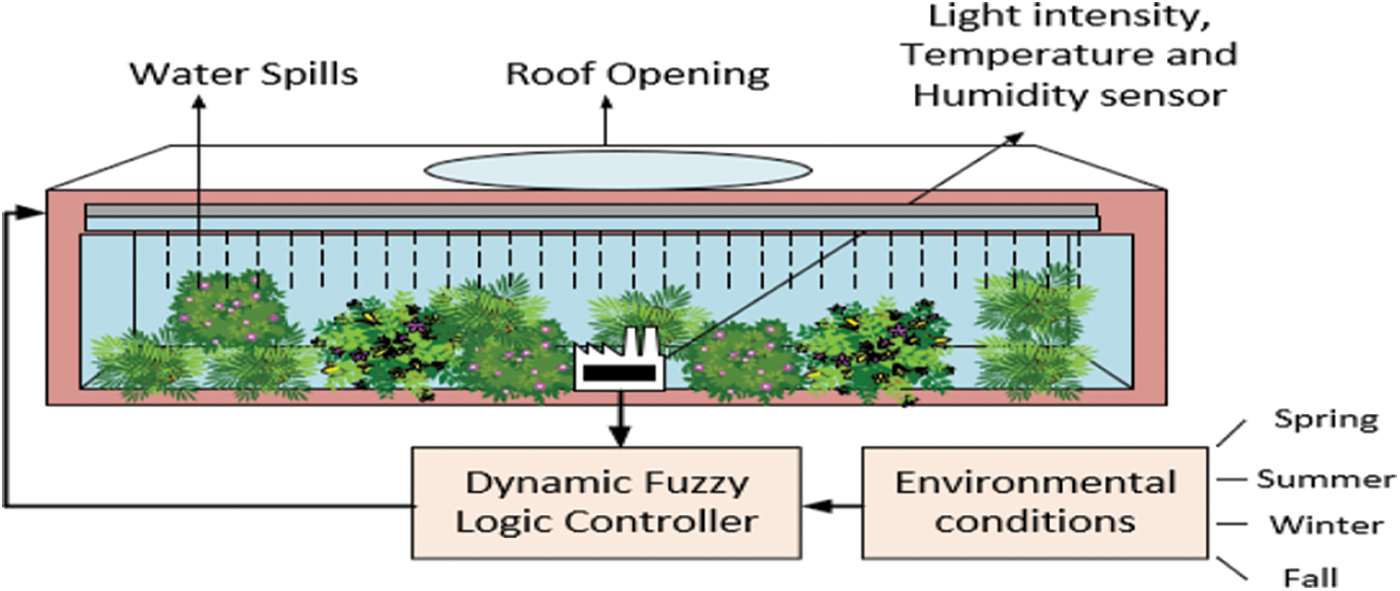
Figure 5: Conceptual diagram depicts the use of dynamic fuzzy logic controller in greenhouse
4 Measurement Results and Discussions
The analog front end system is designed which support the different sensor to measure the environmental vital parameters. The response from the custom developed light sensor is recorded with different bias voltages. The output of light sensor and LDR are separately used to activate the DC motor for controlling the solar panel.
4.1 Measurement of Light Intensity
The measurement of light intensity employs a filter and diffuser over the photodiode D1 as shown in Fig. 6. The BPW34 Optical silicon photodiode is used as sensor in this paper to measure the light intensity. This photodiode is suitable for detecting the light intensity within the visible light spectrum (400–700 nm). Also, the responsivity of this photodiode is linear between 400 to 500 nm. Therefore, it is selected for measuring the light intensity. In the Fig. 6, D1 denotes the BPW 34 photodiode, Vref denotes voltage reference, RF is a feedback resistor, CF is the feedback capacitor, A1 is a transimpedance amplifier, VB is a bias voltage, IPH is the generated photocurrent, Vout1 is the output voltage of the sensor circuit which can be estimated by,
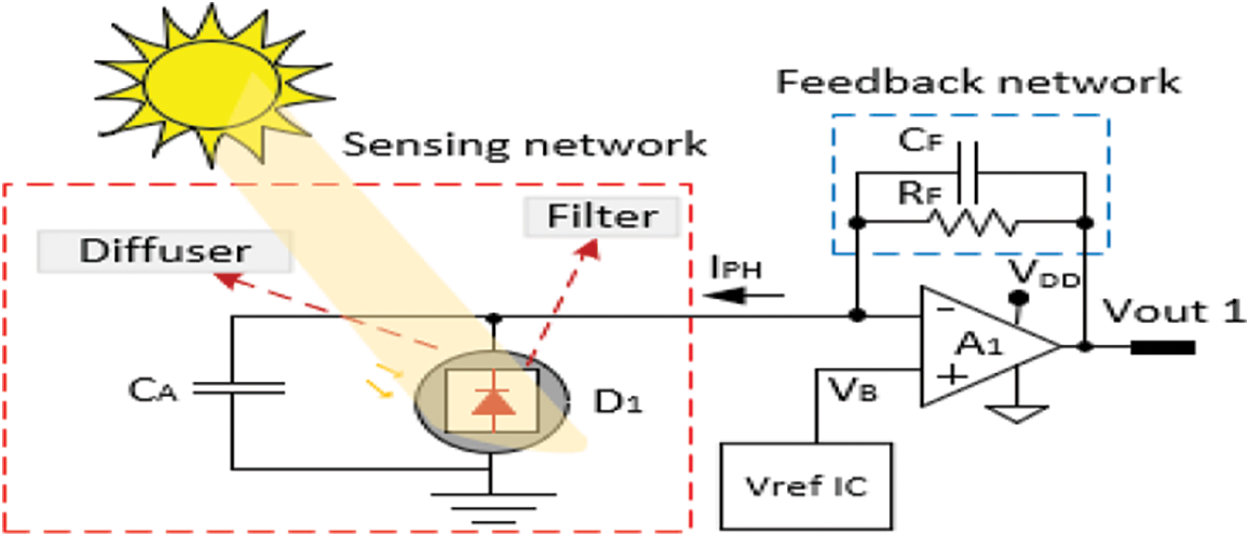
Figure 6: Proposed light sensor circuit design for sensor based automatic solar tracking control system
From the results, it was observed that silicon photodiode becomes an efficient device to measure light intensity as the output voltage varies with respect to light intensity as shown in Fig. 7. The bias voltage in the proposed sensor is 0.9 V to detect the light intensity and RF = 100 KΩ and CF = 0.1 μF. The true active radiation from solar power is measured with the help of commercially available Li-190R quantum sensor. The outputs of sensor values are further calibrated to estimate active radiation and presented in Tab. 2. Fig. 8 shows the graphical representation of IV curve of silicon photodiode BPW34 for light intensity detection at outdoor environment.
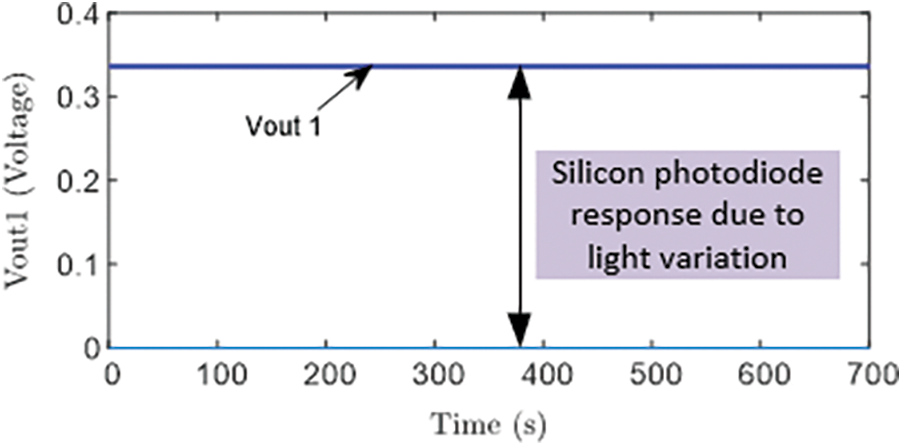
Figure 7: Measured output from sensor circuit and variation curve of silicon photodiode
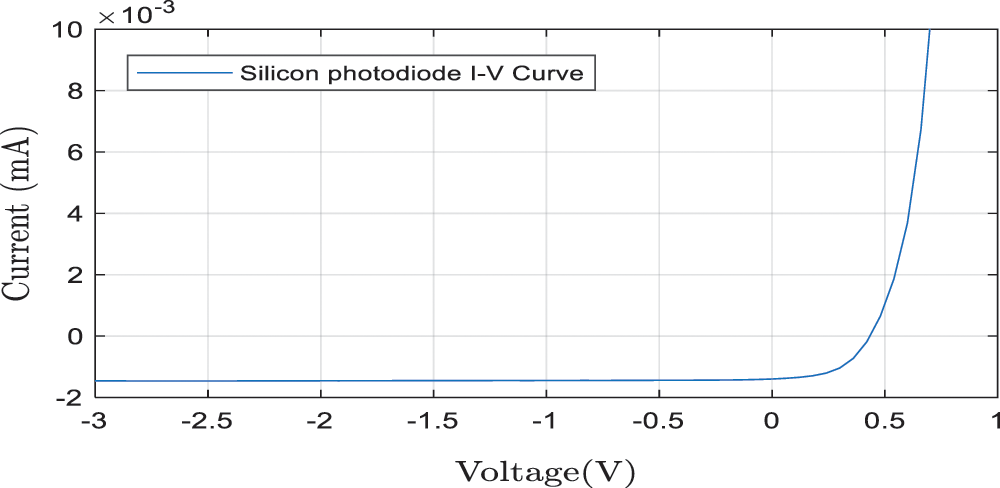
Figure 8: IV Curve of silicon photodiode BPW34

4.2 Measurement of UV Radiation, Temperature, Humidity
The environmental vital parameters such as UV radiation, temperature and humidity become most important parameters in an agricultural IoT system. The high amount of UV radiation and temperature affect the plant growth. The proposed sensor set up consists of silicon UV photodiode of 360, 315 nm respectively could be used for UV measurement and digital temperature and humidity sensor is used to measure temperature and humidity. Tab. 3 shows the measurement of UV radiation, temperature and humidity.

4.3 Solar Panel Testing and Automatic Tracking System
The efficiency of the proposed solar panel is tested by analyzing current and voltage characteristics. The electronic instruments are placed with parallel of solar panel for measuring current and voltages by varying the resistance. The experimental results show that the use of proposed panel achieves good degree of output response with respect to light conditions as shown in Fig. 9. The automatic solar panel tracking system is employed with the support of developed light intensity sensor and LDR. The sensors are attached at both the end of solar panel stand to receive the maximum intensity. Based on the voltage difference measured by light intensity sensor and LDR, solar panel rotates by DC motor which are integrated with automatic tracking system.
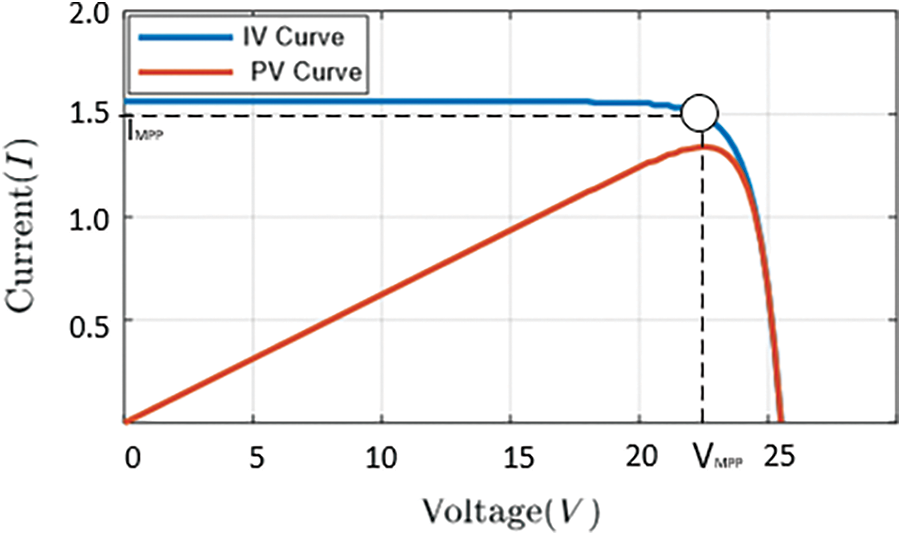
Figure 9: Results obtained from solar panel testing V-I and V-P configurations
4.4 Data Transmission and Monitoring
The interest in development of IoT based real time sensor measurement system in an agriculture environment has been widely increasing because of easy usage of sensors, reduced risk and low cost. Recent advances in technology have inspired numerous designs of sensor-based measurement systems. This paper proposed the development of IoT enabled system to transmit and monitor the environmental vital parameters. Here, Wi-Fi and LoRa modules have been used and implemented with the system to monitor the parameters which are send from sensors in an agriculture field. Thus, the system is useful to monitor the parameters for agriculture such as light intensity, UV radiation, temperature, humidity level through IoT module. Fig. 10 provides the computing platforms for monitoring of environmental vital parameters.

Figure 10: Monitoring and visualization of transmitted data
4.5 Performance of Intelligent Control Methods
This paper proposed the design of dynamic fuzzy logic controller and PID controller for analyzing the performance of control strategies in an agriculture environment. The proposed design will help to maintain required environmental conditions for plants to grow throughout the season. In order to maintain proper environmental conditions, a dedicated rule based fuzzy logic controller is designed to perform control action which can be suitable for any environmental conditions. The advantages of dynamic fuzzy logic controller are to change their membership functions automatically based on climate conditions according to defined fuzzy rules. Fig. 11 shows the updating of membership functions which are required for an environmental condition. The three environmental conditions are considered in this paper and their membership values are updated based of sensor inputs.

Figure 11: Performance of dynamic fuzzy logic controller to update their membership functions
The specific role of a sensing module, DC motor and wireless module with processing unit, design intelligent control methods provide an efficient mechanism to the developer to design a smart measurement system. Based on results obtained from the proposed sensor modules in a greenhouse environment, the control actions are triggered to activate the DC motor for water pumping system. Here, PID controller with auto tuning method can be effectively used to control the speed of DC motor. Fig. 12 provides the output performance curve for speed control of DC motor. Based on the results obtained from an experiment, it was observed that proposed setup confirmed that the PID based control of DC motor provides an effective way to control the speed of DC motor and can be used in smart agriculture system. The rise time, settling time, peak overshoot, peak time, phase margin and stability are considered as the desired performance parameters for PID controller to control the speed of DC motor. Tab. 4 provides these vital performance metrics for auto tuning of PID controller.

Figure 12: Performance of PID controller to control the speed of DC motor

The sensing module used in this paper provides an intensive measurement of temperature, light intensity, humidity and UV radiation which are considered as most essential vital parameters to analyse the environmental conditions. The web page is configured using graphical programming to control the system through the web application shown in Fig. 13.
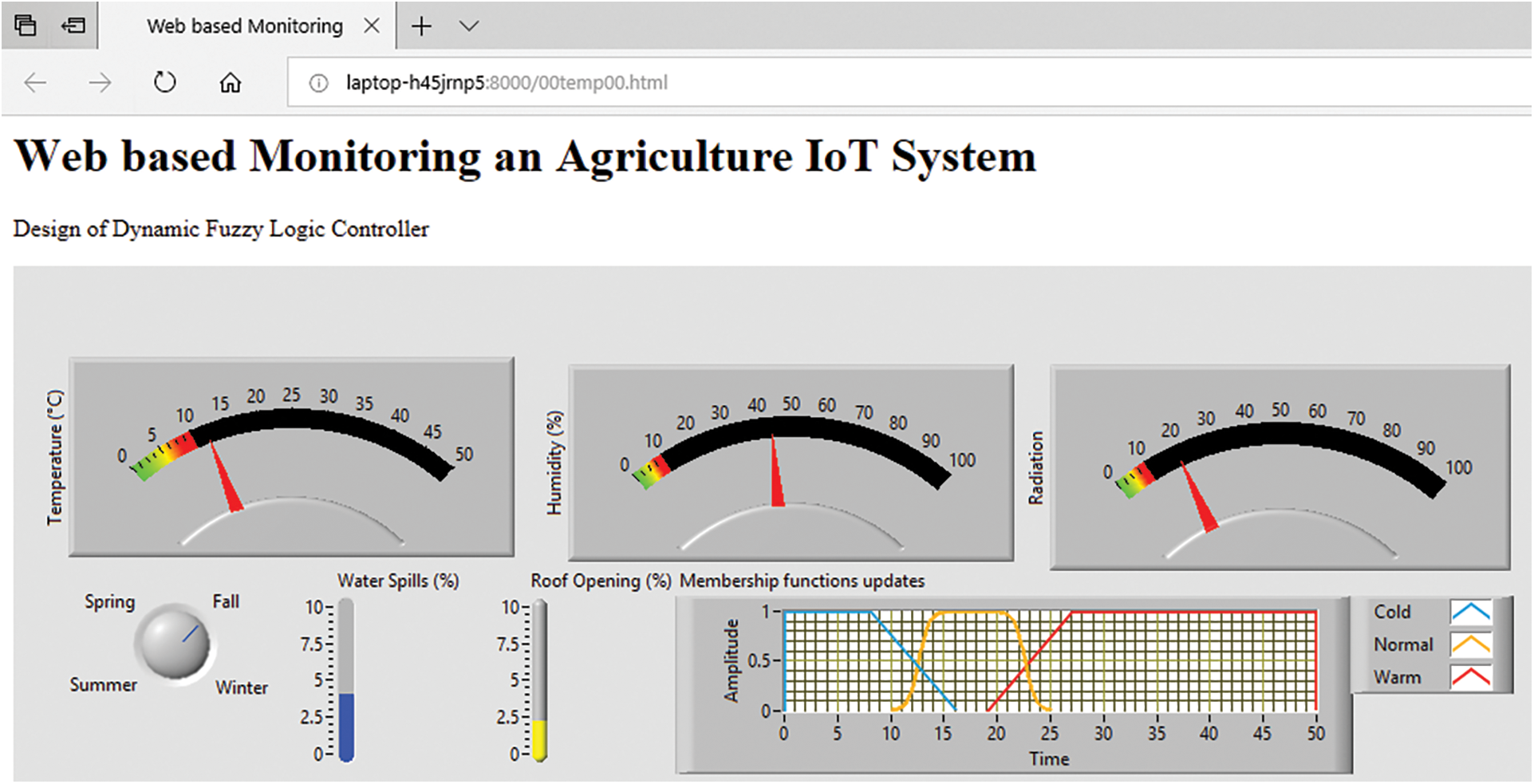
Figure 13: Web based online monitoring of Agricultural IoT system
The custom developed light sensor presented in this paper detects the light from input source and convert into an electrical output. From the literature study, the methodology indicated that spectral irradiances variation between calibration source and field light source can be eliminated by estimating the calibration coefficient. The calibration of developed sensor can be done with support of a calibration lamp in a controlled experimental environment to measure the spectral irradiances. The calibration of developed sensor helps to reduce spectral error for measurement of light intensity. For estimating the active radiation for plants, it is required to multiply the actual sensor value with calibration coefficient. Another approach to eliminate the spectral error will be involving spectral correction approach. The spectral correction can be easily performed only if spectral irradiances are known, but in many cases spectral irradiances are unknown. Hence, the spectral correction can be achieved by collecting spectral irradiances and estimating spectral correction coefficients from different environment light condition (open sky, under shade, under tree canopy, under sail, indoor light, LED light). Also, direct comparison with the reference sensor (spectroradiometer) becomes an alternate solution to calibrate the developed sensor. Hence, the proposed system with intelligent control methods can be used in an agriculture field for monitoring the environmental vital parameters effectively and perform control actions based on any environmental conditions. The future work of the proposed method can be implementation novel artificial intelligence concept along with custom developed low power embedded devices.
This paper presents the development and analysis of sensor based control strategies for smart agricultural IoT system to monitor environmental vital parameters. The proposed method provides a real time measurement of different environmental vital parameters such as UV radiation, temperature, humidity and light intensity. This paper also proposed a web-based monitoring of agriculture system which has Wi-Fi and LoRa wireless module to transmit the data to the monitoring station. This method helps the farmer to monitor their agriculture field very effectively. The design of intelligent control methods and their integration with proposed system has many advantages to provide control actions. The designs of dynamic fuzzy logic controller optimize the control scenario of agriculture environmental system by updating their membership functions for maintaining good environmental conditions. The different experiments were carried out and it is concluded that the developed system consists of solar panel tracking, measurement of vital parameters, wireless transmission, web-based monitoring and implementation of intelligent control methods will be a promising way to the developer in an agriculture environment to develop an innovative application with the help of various real time sensor data.
Acknowledgement: The authors would like to thank the management of Gnanamani college of Technology and Department of Electronics and Communication Engineering for providing the resources to complete this work.
Funding Statement: The authors received no specific funding for this study.
Conflicts of Interest: The authors declare that they have no conflicts of interest to report regarding the present study.
1. N. Harris, A. Cranny, M. Rivers, K. Smettem and E. G. Barrett-Lennard, “Application of distributed wireless chloride sensors to environmental monitoring: Initial results,” IEEE Transactions on Instrumentation and Measurement, vol. 65, no. 4, pp. 736–743, 2016. [Google Scholar]
2. O. Kaiwartya, A. Abdullah, Y. Cao, R. S. Raw, S. Kumar et al., “T-MQM: Testbed-based multi-metric quality measurement of sensor deployment for precision agriculture—a case study,” IEEE Sensors Journal, vol. 16, no. 23, pp. 8649–8664, 2016. [Google Scholar]
3. S. N. Daskalakis, G. Goussetis, S. D. Assimonis, M. M. Tentzeris and A. Georgiadis, “A uW backscatter-morse-leaf sensor for low-power agricultural wireless sensor networks,” IEEE Sensors Journal, vol. 18, no. 19, pp. 7889–7898, 2018. [Google Scholar]
4. V. Palazzi, F. Gelati, U. Vaglioni, F. Alimenti, P. Mezzanotte et al., “Leaf-compatible autonomous RFID-based wireless temperature sensors for precision agriculture,” in IEEE Topical Conf. on Wireless Sensors and Sensor Networks (WiSNet), Italy, pp. 1–4, 2019. [Google Scholar]
5. K. Y. You, C. Y. Lee, Y. L. Then, S. H. C. Chong, L. L. You et al., “Precise moisture monitoring for various soil types using handheld microwave-sensor meter,” IEEE Sensors Journal, vol. 13, no. 7, pp. 2563–2570, 2013. [Google Scholar]
6. C. T. Chiang, C. M. Chang and C. C. Chang, “Design of an ultraviolet light intensity monitor for personally wearable devices,” IEEE Sensors Journal, vol. 18, no. 11, pp. 4673–4678, 2018. [Google Scholar]
7. C. Y. Lee and G. Bin, “Humidity sensors: A review,” Sensor Letters, vol. 3, no. 1–4, pp. 1–15, 2005. [Google Scholar]
8. F. M. David, F. R. Fulginei, A. Laudani and A. Salvini, “A neural network-based low-cost solar irradiance sensor,” IEEE Transactions on Instrumentation and Measurement, vol. 63, no. 3, pp. 583–591, 2004. [Google Scholar]
9. D. Yang and N. Chen, “Expanding existing solar irradiance monitoring network using entropy,” IEEE Transactions on Sustainable Energy, vol. 6, no. 4, pp. 1208–1215, 2015. [Google Scholar]
10. C. T. Chiang, J. X. Lin and L. Liu, “Design of a CMOS calibrated monolithic illumination meter for monitoring solar radiation of tomato crops,” IEEE Sensors Journal, vol. 15, no. 9, pp. 5285–5290, 2015. [Google Scholar]
11. S. Y. Alsadi and Y. F. Nassar, “Estimation of solar irradiance on solar fields: An analytical approach and experimental results,” IEEE Transactions on Sustainable Energy, vol. 8, no. 4, pp. 1601–1608, 2017. [Google Scholar]
12. K. Achuthan, J. D. Freeman, P. Nedungadi, U. Mohankumar, A. Varghese et al., “Remote triggered dual-axis solar irradiance measurement system,” IEEE Transactions on Industry Applications, vol. 56, no. 2, pp. 1742–1751, 2020. [Google Scholar]
13. E. Koutroulis, K. Kalaitzakis and N. C. Voulgaris, “Development of a microcontroller-based photovoltaic maximum power point tracking control system,” IEEE Transactions on Power Electronics, vol. 16, no. 1, pp. 46–54, 2001. [Google Scholar]
14. N. Mutoh, M. Ohno and T. Inoue, “A method for MPPT control while searching for parameters corresponding to weather conditions for PV generation systems,” in 30th Annual Conf. of IEEE Industrial Electronics Society, IECON 2004, Busan, South Korea, vol. 3, pp. 3094–3099, 2004. [Google Scholar]
15. C. Y. Hsieh and K. H. Chen, “Boost DC-DC converter with fast reference tracking (FRT) and charge-recycling (CR) techniques for high-efficiency and low-cost LED driver,” IEEE Journal of Solid-State Circuits, vol. 44, no. 9, pp. 2568–2580, 2009. [Google Scholar]
16. A. Stjepanovic, S. Stjepanovic, F. Softic and Z. Bundalo, “Microcontroller based solar tracking system,” in 9th Int. Conf. on Telecommunication in Modern Satellite, Cable, and Broadcasting Services, Nis, Serbia, pp. 518–521, 2009. [Google Scholar]
17. A. Stjepanovic, F. Softic, Z. Bundalo and S. Stjepanovic, “Solar tracking system and modelling of PV module,” in The 33rd Int. Convention MIPRO, Opatija, Croatia, pp. 105–109, 2010. [Google Scholar]
18. C. Y. Yang, C. Y. Hsieh, F. K. Feng and K. H. Chen, “Highly efficient analog maximum power point tracking (AMPPT) in a photovoltaic system,” IEEE Transactions on Circuits and Systems I: Regular Papers, vol. 59, no. 7, pp. 1546–1556, 2012. [Google Scholar]
19. J. Huusari and T. Suntio, “Dynamic properties of current-fed quadratic full-bridge buck converter for distributed photovoltaic MPP-tracking systems,” IEEE Transactions on Power Electronics, vol. 27, no. 11, pp. 4681–4689, 2012. [Google Scholar]
20. A. Montecucco and A. R. Knox, “Maximum power point tracking converter based on the open-circuit voltage method for thermoelectric generators,” IEEE Transactions on Power Electronics, vol. 30, no. 2, pp. 828–839, 2015. [Google Scholar]
21. P. Sharma and N. Malhotri, “Solar tracking system using microcontroller,” in 1st Int. Conf. on Non-Conventional Energy (ICONCE 2014), Kalyani, India, pp. 77–79, 2014. [Google Scholar]
22. J. N. Juang and R. Radharamanan, “Design of a solar tracking system for renewable energy,” in Proc. of the 2014 Zone 1 Conf. of the American Society for Engineering Education, Bridgeport, CT, pp. 1–8, 2014. [Google Scholar]
23. R. Jegan, P. A. C. Raj, P. R. Kumar and W. S. Nimi, “Development of mechanical based solar panel tracking system using FPGA,” International Journal of Mechanical Engineering and Technology, vol. 9, no. 11, pp. 1667–1674, 2018. [Google Scholar]
24. W. Wang, A. C. F. Liu, H. S. H. Chung and R. W. H. Lau, “Fault diagnosis of photovoltaic panels using dynamic current-voltage characteristics,” IEEE Transactions on Power Electronics, vol. 31, no. 2, pp. 1588–1599, 2015. [Google Scholar]
25. S. Mohanty, B. Subudhi and P. K. Ray, “A new MPPT design using grey wolf optimization technique for photovoltaic system under partial shading conditions,” IEEE Transactions on Sustainable Energy, vol. 7, no. 1, pp. 181–188, 2016. [Google Scholar]
26. C. C. Hua, Y. H. Fang and W. T. Chen, “Hybrid maximum power point tracking method with variable step size for photovoltaic systems,” IET Renewable Power Generation, vol. 10, no. 2, pp. 127–132, 2016. [Google Scholar]
27. D. Chogueur, S. Bentouba and A. Merouane, “Smart sun tracking system,” in 3rd Int. Renewable and Sustainable Energy Conf. (IRSEC), Marrakech, Morocco, pp. 1–6, 2015. [Google Scholar]
28. L. Shang, H. Guo and W. Zhu, “An improved MPPT control strategy based on incremental conductance algorithm,” Protection and Control of Modern Power Systems, vol. 5, no. 14, pp. 1–8, 2020. [Google Scholar]
29. C. Manickam, G. R. Raman, G. P. Raman and G. Saravana Ilango, “A hybrid algorithm for tracking of global MPP based on perturb and observe and particle swarm optimization with reduced power oscillation in string inverters,” IEEE Transactions on Industrial Electronics, vol. 63, no. 10, pp. 1, 2016. [Google Scholar]
30. H. Fathabadi, “Novel high accurate sensorless dual-axis solar tracking system controlled by maximum power point tracking unit of photovoltaic systems,” Applied Energy, vol. 173, pp. 448–459, 2016. [Google Scholar]
31. L. M. Lelutiu, C. M. Lungoci, M. D. Calin and M. Cirstea, “A power efficient mobile solar tracking system,” in Int. Conf. on Optimization of Electrical and Electronic Equipment (OPTIM) & 2017 Intl Aegean Conf. on Electrical Machines and Power Electronics (ACEMP), Brasov, Romania, pp. 561–566, 2017. [Google Scholar]
32. A. Xenophontos and A. M. Bazzi, “Model-based maximum power curves of solar photovoltaic panels under partial shading conditions,” IEEE Journal of Photovoltaics, vol. 8, no. 1, pp. 233–238, 2018. [Google Scholar]
33. C. C. Hua, Y. H. Fang and C. J. Wong, “Improved solar system with maximum power point tracking,” IET Renewable Power Generation, vol. 12, no. 7, pp. 806–814, 2018. [Google Scholar]
34. K. Salgaonkar, A. Shirodkar, A. Yedurkar and A. Mohite, “Automated dual axis solar tracking system using LDR sensors,” International Journal of Engineering Research & Technology (IJERT), vol. 6, no. 7, pp. 279–282, 2017. [Google Scholar]
35. H. D. Tafti, A. Sangwongwanich, Y. Yang and J. Pou, “An adaptive control scheme for flexible power point tracking in photovoltaic systems,” IEEE Transactions on Power Electronics, vol. 34, no. 6, pp. 5451–5463, 2019. [Google Scholar]
36. R. Rai, S. Shukla and B. Singh, “Reactive power based MRAS for speed estimation of solar fed induction motor with improved feedback linearization for water pumping,” IEEE Transactions on Industrial Informatics, vol. 16, no. 7, pp. 4714–4725, 2020. [Google Scholar]
37. N. Kuttybay, S. Mekhilef, A. Saymbetov and M. Nurgaliyev, “An automated intelligent solar tracking control system with adaptive algorithm for different weather conditions,” in IEEE Int. Conf. on Automatic Control and Intelligent Systems (I2CACIS), Selangor, Malaysia, pp. 315–319, 2019. [Google Scholar]
38. P. K. Sahu and M. D. Manjrekar, “Controller design and implementation of solar panel companion inverters,” IEEE Transactions on Industry Applications, vol. 56, no. 2, pp. 2001–2011, 2020. [Google Scholar]
39. X. Zhang, J. Du, C. Fan and D. Liu, “A wireless sensor monitoring node based on automatic tracking solar-powered panel for paddy field environment,” IEEE Internet of Things Journal, vol. 4, no. 5, pp. 1304–1311, 2017. [Google Scholar]
40. B. Subudhi and R. Pradhan, “A new adaptive maximum power point controller for a photovoltaic system,” IEEE Transactions on Sustainable Energy, vol. 10, no. 4, pp. 1625–1632, 2019. [Google Scholar]
41. B. Paul, “A novel mathematical model to evaluate the impact of packet retransmissions in loRa WAN,” IEEE Transactions on Power Electronics, vol. 16, no. 1, pp. 46–54, 2001. [Google Scholar]
42. J. P. S. Sundaram, W. Du and Z. Zhao, “A survey on LoRa networking: Research problems, current solutions, and open issues,” IEEE Communications Surveys & Tutorials, vol. 22, no. 1, pp. 371–388, 2020. [Google Scholar]
43. F. T. Lin, Y. C. Kuo, J. C. Hsieh and H. Y. Tsai, “A self-powering wireless environment monitoring system using soil energy,” IEEE Sensors Journal, vol. 15, no. 7, pp. 3751–3758, 2015. [Google Scholar]
44. C. T. Kone, J. D. Mathias and G. D. Sousa, “Adaptive management of energy consumption, reliability and delay of wireless sensor node: Application to IEEE 802.15.4 wireless sensor node,” PloS One, vol. 12, no. 2, pp. 1–28, 2017. [Google Scholar]
45. M. E. E. Alahi, N. P. Ishak, S. C. Mukhopadhyay and L. Burkitt, “An internet-of-things enabled smart sensing system for nitrate monitoring,” IEEE Internet of Things Journal, vol. 5, no. 6, pp. 4409–4417, 2018. [Google Scholar]
46. O. Elijah, T. A. Rahman, I. Orikumhi and C. Y. Leow, “An overview of internet of things (IoT) and data analytics in agriculture: Benefits and challenges,” IEEE Internet of Things Journal, vol. 5, no. 5, pp. 3758–3773, 2018. [Google Scholar]
47. J. J. E. Lopez, A. C. Atoche, J. V. Castillo and E. S. Sinencio, “Smart soil parameters estimation system using an autonomous wireless sensor network with dynamic power management strategy,” IEEE Sensors Journal, vol. 18, no. 21, pp. 8913–8923, 2018. [Google Scholar]
48. N. Ahmed, D. De and M. I. Hussain, “Internet of things (IoT) for smart precision agriculture and farming in rural areas,” IEEE Internet of Things Journal, vol. 5, no. 6, pp. 4890–4899, 2018. [Google Scholar]
49. X. Geng, Q. Zhang, Q. Wei and X. Sun, “A mobile greenhouse environment monitoring system based on the internet of things,” IEEE Access, vol. 7, pp. 135832–135844, 2019. [Google Scholar]
50. S. Farooq, S. A. Riaz, A. Abid, K. Abid and M. A. Naeem, “A survey on the role of IoT in agriculture for the implementation of smart farming,” IEEE Access, vol. 7, pp. 156237–156271, 2019. [Google Scholar]
51. R. N. Bashir, I. S. Bajwa and M. M. A. Shahid, “Internet of things (IoT) and machine learning based leaching requirements estimation for saline soils,” IEEE Internet of Things Journal, vol. 7, no. 5, pp. 4464–4472, 2020. [Google Scholar]
52. K. Huang, L. Shu, K. Li, F. Yang, G. Han et al., “Photovoltaic agricultural internet of things towards realizing the next generation of smart farming,” IEEE Access, vol. 8, pp. 76300–76312, 2020. [Google Scholar]
 | This work is licensed under a Creative Commons Attribution 4.0 International License, which permits unrestricted use, distribution, and reproduction in any medium, provided the original work is properly cited. |